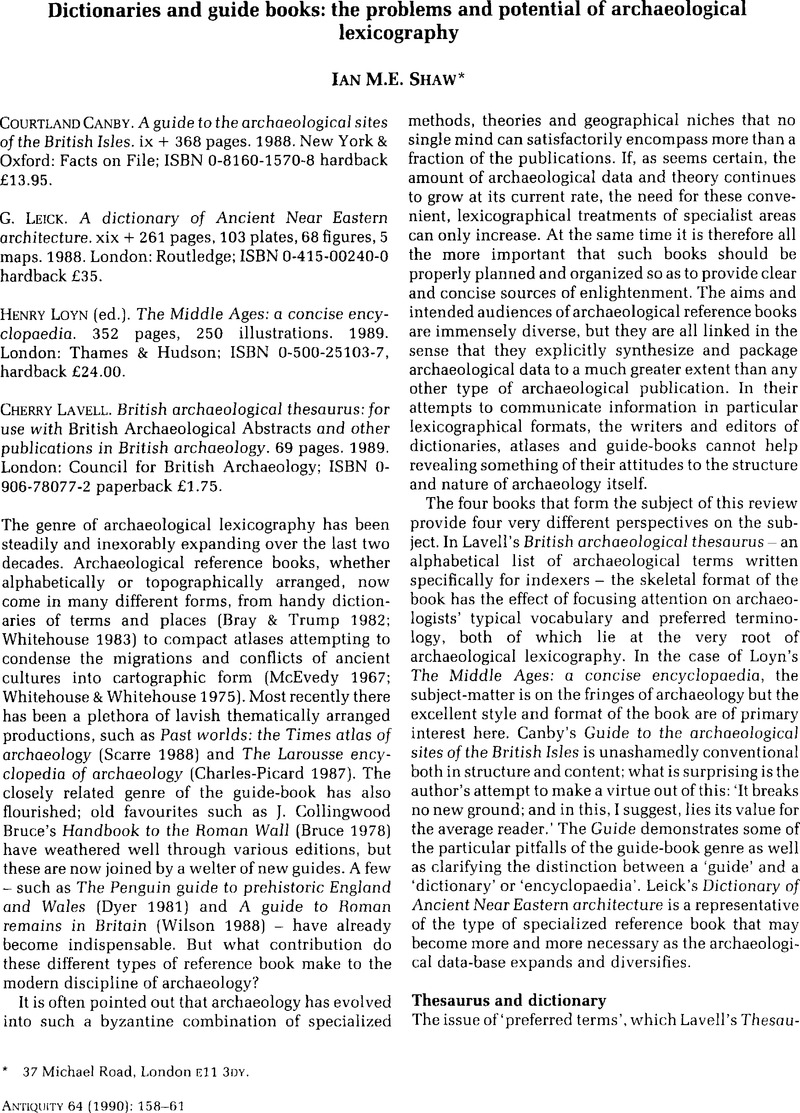No CrossRef data available.
Article contents
Dictionaries and guide books: the problems and potential of archaeological lexicography
Published online by Cambridge University Press: 02 January 2015
Abstract
An abstract is not available for this content so a preview has been provided. Please use the Get access link above for information on how to access this content.

- Type
- Review articles
- Information
- Copyright
- Copyright © Antiquity Publications Ltd 1990
References
Bray, W. & Trump, D.. 1982
The Penguin dictionary of archaeoiogy. 2nd edition. Harmondsworth: Penguin.Google Scholar
Bruce, J. C.
1978. Handbook to the Roman Wall with the Cumbrian coast and outpost forts. 13th edition, edited and enlarged by Daniels, C.. Newcastle upon Tyne: Harold Hill and Son.Google Scholar
Charles-Picard, D. (ed.). 1987. Larousse encyclopedia of archaeology. English-language edition. New York: Larousse.Google Scholar
Dyer, J.
1981. The Penguin guide to prehistoric England and Wales. Harmondsworth: Penguin.Google Scholar
Whitehouse, R. & Whitehouse, D.. 1975. Archaeological atias of the world. London: Thames and Hudson.Google Scholar
Wilson, R.J.A.
1988. A guide to the Roman remains in Britain. 3rd edition. London: Constable.Google Scholar


